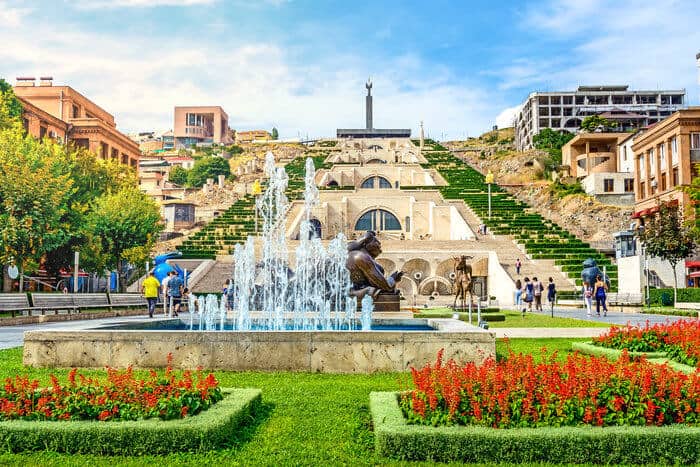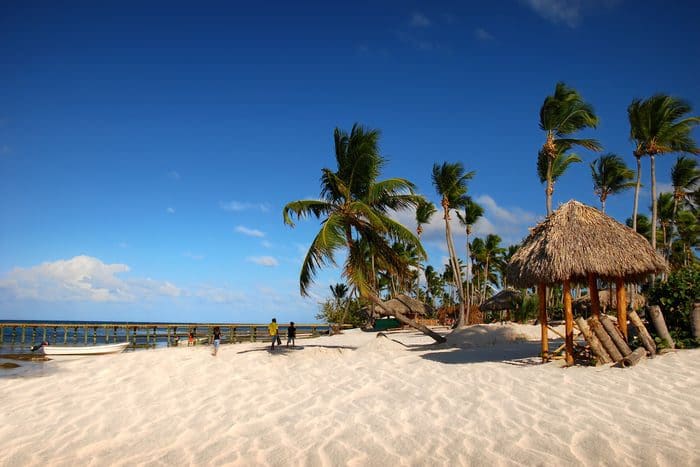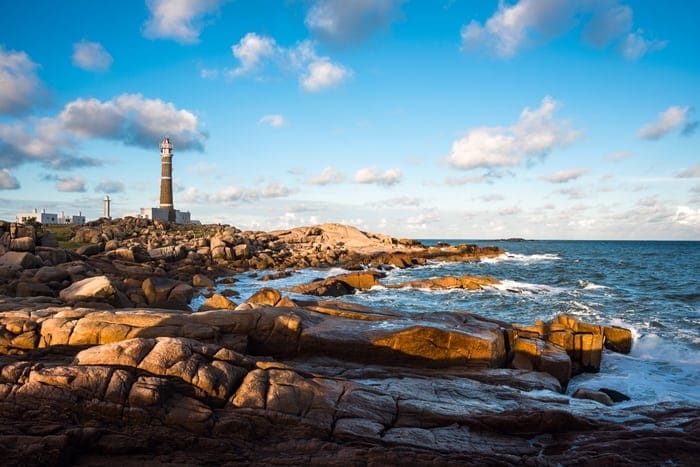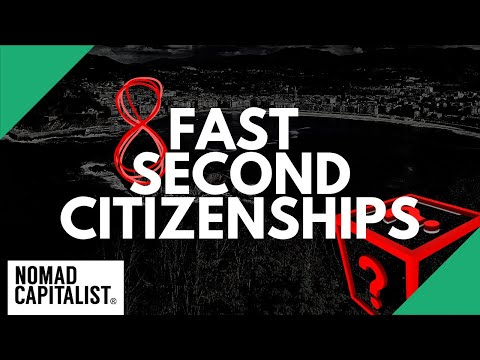The Fastest Countries in the World to Become a Citizen
October 18, 2024
On our YouTube channel, the most commonly asked question by far is, “Where can I go to get a second passport quickly?”
Quite a lot has changed since we started writing articles on this topic of the fastest countries in the world of second citizenship and just about everything else we talk about here at Nomad Capitalist. The targets are always moving. Today’s fastest citizenship may be tomorrow’s closed, or it may be dead altogether.
Getting a second passport is perhaps the most important step in building your holistic strategy and enhancing your freedom. However, as you can imagine, becoming a citizen of another country can often take quite a bit of time.
In Malaysia, for example, it takes at least ten years to become a citizen, and you won’t be able to keep your current passport since dual nationality is forbidden.
Having dual citizenship or even multiple citizenship gives you the freedom to travel and invest. Having one citizenship alone does not.
Understandably, someone looking for a second citizenship would want first to determine where they can obtain citizenship the fastest. After all, we frequently discuss the idea that citizenship is somewhat interchangeable; plenty of people are born with citizenship in countries they’ve never lived in and couldn’t care less about.
As our founder, Mr. Henderson, mentioned during an interview for the BBC, citizenship is somewhat of a commodity. Which passport you carry determines where you can live, travel, work, and, in the case of many restrictive emerging markets, where you can invest.
Most Westerners, however, aren’t in a rush to obtain Cambodian citizenship in order to buy cheap land in the country, but practically everyone in Iran would jump at the chance to have another passport.
There are several considerations when determining which second passport is best to pursue. These include your current tax situation, where you need to travel, how much time you can commit to spending in the country, your finances, and even your job prospects.
We have clients from emerging countries who have had to turn down lucrative job offers simply because they can’t travel to certain countries or obtain visas quickly enough to satisfy their new employers.
If being a citizen of a country with poor visa-free travel costs you thousands a year, you will have an even greater desire than many to find the fastest countries to become a citizen.
Likewise, high-income US citizens, who are required to pay tax on their worldwide income even if they don’t live there, may want to speed up the process of obtaining another nationality in order to renounce their US citizenship and avoid the ongoing hassles and expenses of paying tax to a country they don’t live in.
On the other hand, a European citizen who can more easily become a “tax non-resident” and pay low or zero tax somewhere else may be more willing to wait a little longer to obtain better citizenship.
Similarly, someone from a country that forbids dual citizenship who wants a second residency that can lead to citizenship as an insurance policy may be even less concerned with the timeline.
While the second passport that you pursue will ultimately depend on factors like this, it’s good to have an idea of where you might be able to become a citizen if you wish to do so quickly. In this article, we’ll discuss:
- Four different ways to become a citizen quickly.
- The best countries for fast second citizenships and.
- Issues to consider with a quick and easy second passport.
The Fastest Way to Get a Second Passport
The fastest way, this is actually not the fastest way, but rather the quickest, most cost-efficient way to get a second passport. Some avenues to getting a second passport, like making an investment in a country, are extremely quick.
In contrast, others, like naturalization, can be somewhat slow, so if you’re looking to become a citizen of a particular country, it’s a good idea to understand how you can get that citizenship as quickly as possible.
So, before we review a few specific countries, let’s discuss each of the fastest ways to obtain citizenship.
Make an Investment
If speed is your goal, then the passport process can be expedited if you have significant cash to invest. Some of the fastest citizenship by investment programs for an Instant second passport include Dominica, St. Kitts & Nevis, and Grenada.
Most quality citizenship by investment programs can be found in either the Caribbean, Dominica, which starts at $100,000, or in Europe, Malta, which runs upwards of $736,000.
If you’re looking for the fastest citizenship possible and have the money to invest, citizenship by investment could be your best option.
Citizenship by Descent
If the price of citizenship by investment is a bit too steep for you, then you can also get citizenship rather quickly through your parents, grandparents, or, in some cases, your great-grandparents. This process is called citizenship by descent, and it can take as little as six months.
However, seeing as most countries that offer it have substantial bureaucracy, you’ll more likely get your passport in more than two years. That also doesn’t include the time you’ll need to spend digging through archives or family documents to get the proof you need to be eligible for citizenship by descent.
The majority of these programs are in the EU, where you can get citizenship relatively inexpensively if you have European ancestors.
Discover if you can reclaim your heritage with our citizenship by descent eligibility checker. You could potentially gain all the benefits of second citizenship through family ties, including enhanced freedom to travel, reside, and do business, as well as better services and lower taxes, with zero investment costs.
Marry a Foreign National
If you are lucky enough to fall in love with someone with a great passport, it’s possible you could be a naturalized citizen of their home country. Foreign spouses often qualify for a shortened waiting period for naturalization, although language requirements sometimes exist.
Few countries still offer instant citizenship for foreign spouses, but a few attractive options remain. However, this is something that you need to be careful with since getting married under false pretenses constitutes immigration fraud.
Special Treatment
If you have an exceptional talent or invest enough money, some countries allow the President to waive naturalization requirements (including language requirements) and make anyone a citizen.
Countries that have a history of this include Albania, Qatar, and Singapore. Special treatment is also the basis for Austria’s alleged economic citizenship program but is rarely used. Additionally, most people who would want an Austrian passport wouldn’t qualify on the basis of “not seeming Austrian enough.”
The Fastest Countries to Become a Citizen Through Residency
The fastest way to get a second passport for most people is to spend actual time in the country. Becoming a resident of a foreign country and starting the clock ticking on naturalization is the easiest way to go if you don’t have the benefit of luck or substantial wealth.
However, as you read through this list, remember that the timelines given aren’t 100% guaranteed. Naturalization can be tricky at times, so even if you can technically get citizenship in a year or two, you may have to wait longer.
Our List of Fast and Easy Nationality Countries
As we have mentioned, the targets are always moving in the world of second citizenship, so it’s important to note a few quick ways to get a second passport that no longer works.
Argentina, for instance, does not offer citizenship in just two years, despite what some might say. The Argentine citizenship process requires you to live there for two years to obtain permanent residency, and you must then stay for three more years to become a citizen.
As always, you should always be on the lookout for scams. If someone promises you something too good to be true, then it probably is.
With that said, here’s our list of countries where it’s easy to get a fast citizenship.
Armenia (3 years)

In addition to having an efficient citizenship-by-descent program, Armenia allows you to become a naturalized citizen in about three years.
While you’ll likely need to invest in the country to secure a residence permit, there are plenty of excellent opportunities for investing in real estate in Armenia, and you can also establish residency by attending an Armenian university.
Once you have your Armenian residence permit, the rest is fairly simple. As long as you spend enough time in the country to maintain your residence permit, you can apply for citizenship in just three years. You will need to pass a test on the Armenian constitution in Armenian, but you can take a translator with you to the test.
Dominican Republic (3 years)

Not to be confused with the island nation of Dominica, which allows for nearly instant citizenship in exchange for a six-figure donation, the Dominican Republic claims to offer second citizenship to well-off foreigners in as little as three years. However, this doesn’t always work in practice.
While the Dominican Republic passport is of poor quality, it offers access to some highly livable countries that let practically anyone in as a tourist.
One way to speed up the naturalization timeline is to invest $200,000 in real estate or a business. Colombia similarly offers a faster citizenship route for investors with around the same amount of cash. However, those who can prove that they have a steady income and are willing to spend some time in the DR can waive the investment requirement.
We know people who qualified for citizenship in the Dominican Republic in two years but have waited far longer to get it. So, as with any country, the letter of the law may not always prevail.
Peru (2 years)

When looking for the best second residency programs in Latin America, Peru can be an interesting option for quick citizenship. Once you become a resident, it’s a quick two years before you can apply for citizenship.
The catch, however, is qualifying for Peruvian residence, which has become increasingly more difficult in recent years. It used to be that attending school in the country, starting a business there, or showing proof of more than $1,000 per month in investment or pension income could qualify you for Peruvian residence as long as you were willing to spend most of your time in the country.
But it really isn’t that easy. For one, Peru is not following its own rules. A Peruvian residence permit means making an investment of around $130,000 and employing five Peruvians in a second year.
Once you receive the residence permit, you must be careful to spend enough time in Peru each year, as they’ve also cracked down on the physical residence requirements.
Peru is one country that people have talked about as being super easy, but nothing easy lasts long. Ultimately, they start making changes. The two-year citizenship timeline still stands, but they’ve made it more challenging to take the first step toward citizenship by qualifying for residence.
Also, keep in mind that you’ll need to be able to pass a language and history test in Spanish to get your Peruvian passport, so if your language skills aren’t up to snuff, then it may take you a bit longer.
Paraguay (3 years)

Paraguay is a great permanent residence program in an interesting, off-the-radar emerging country interesting. Paraguay has consistently been one of the easiest countries to get citizenship in. While many would be hard-pressed to locate it on a map, the country has a relatively good travel document offering visa-free travel to Europe and South America, ranking 62nd on the Nomad Capitalist Passport Index.
However, we can argue that in some cases, the fastest is not always the best. Theoretically, you could become a naturalized citizen of Paraguay in just three years. For most people, however, the citizenship process takes substantially longer and comes with its own challenges.
Uruguay (3 years)

If you are part of a family unit actually living on the ground in Uruguay, you can apply for citizenship after three years so long as you can show substantial ties to the country.
However, if you’re single and your family stays home, the wait is extended to five years. However, a “family unit” does not have to refer to a spouse and children. A single child can live with a parent and still qualify.
Owning real estate, renting a real apartment, being a member of social clubs, and having a local doctor also count as “substantial ties” to Uruguay.
Thanks to these complicated qualifications, claiming Uruguayan citizenship has become extremely difficult in recent years. Therefore, we generally recommend against Uruguay because of this difficulty as well as the high opportunity cost here. There are simply better options unless you really wish to become Uruguayan.
Bolivia (3 years)
Depending on your situation, Bolivia may be another viable quick option. You can become a resident by investing between $10,000 to $1,000,000 in real estate, by Incorporating a company, or by investing in commercial joint ventures.
While we don’t do a lot of work in Bolivia, from our understanding, the commitment may be more than most of the other countries as they want more than six months a year of residence for two years. Alternatively, you may be able to convince a judge to accept you even less time.
Bolivia is not on the radar of most Nomad Capitalists, and there’s probably a reason for that.
There are just not a lot of opportunities there, outside of some perhaps niche investment opportunities, but if you want to spend some time in Bolivia, you can get that passport in a couple of years. One advantage Bolivia has over some of the other countries on this list is that it allows dual citizenship.
Honduras (3 years)
There are numerous different ways to get a Honduran passport, and you can be a retiree, or you can invest $50,000.
Under the Honduras Rentista programs, income must be from a more passive source like rental income or savings.
As with many Central and South American countries, there are pretty accessible avenues that you can use to get in, including demonstrating wealth or actually putting some of the banks into or buying a property.
The best option for Honduras might be Roatan, in the Western Caribbean, not in the mainland, as it has a reputation for being a little dicey.
Instant Citizenship Countries: FAQs
If you’re looking for a fast and easy citizenship, we recommend any country with a citizenship by investment scheme . These nations will grant you citizenship once you make an investment in their economy. A few examples include Dominica, Antigua and Barbuda, Saint Lucia, Turkey and Saint Kitts and Nevis.
The Caribbean nations offering citizenship by investment have developed a reputation for a fast, cheap and easy application process. If you become a citizen through residency, Armenia, the Dominican Republic and Peru are fast and easy options.
Yes, many countries (mainly in the Caribbean) offer citizenship by investment programs. If you successfully apply for citizenship by investment, you can expect to get your hands on a second passport within 3-4 months at the fastest.
No, some countries require you to renounce your existing citizenship before you get your hands on their passport.
A second citizenship allows you to live and work permanently in a new country. It grants you a second passport with greater travel freedoms, as well as the opportunity to access a more favourable tax system. Having a second citizenship is also the ultimate global ‘Plan B’.
Yes, the United States allows dual citizenship, meaning they can pursue a second citizenship in any country they wish.
Why Do You Need a Second Citizenship?
If you want to become a citizen of another country as quickly as possible, think about this question: why do you need a second citizenship?
While it’s certainly tempting to get the easiest and fastest second passport available, you need to consider what you’re trying to do with that passport before diving headfirst into getting one.
Although these countries allow you to become a citizen rather quickly, you’ll still need to invest a reasonable amount of time and money into the process to get that second passport, so it’s important that you pursue the right second citizenship for your needs, desires, and long-term goals.
If you’re a British citizen, for instance, then you might be tempted to get Maltese citizenship by investment since it allows you to get EU citizenship in about a year.
However, this particular citizenship-by-investment program has a significant price tag, so unless you need Maltese citizenship for other reasons, then you may want to look into EU residency options that will cost you less.
While I understand the urge to get a second passport as fast as you can, you need to think holistically about your goals and strategies in business and life before you become a citizen of the first country that will accept you.
As we have helped more than 1,500 clients get second passports, we can attest to how important it is to evaluate how a second passport will enhance your freedom, tax strategy, and bottom line.
Are you seeking a second citizenship, but you can’t afford or can’t bring yourself to make a donation to a Caribbean country? Living in one of these options means you can become a citizen in a relatively short period of time.
Almost anyone can get second citizenship without a large financial investment or without making a large donation.
Do you have the luck of having the proper family tree? Even better, check out the citizenship by descent options available to you.
There’s only one potential challenge in these countries: you actually do need to spend time in the country. But, if you’re willing to accept the lifestyle change, if you are willing to pay taxes, and in many cases, learn the language, then these jurisdictions are where you can, for not a lot of money, go and get your second citizenship.
Would you like to start to build your passport portfolio? Are you just starting out and don’t have large amounts of money to set aside for citizenship by investment? Become a Nomad Capitalist client, and we can help you get that second citizenship quickly.


How to Get UAE Citizenship – The Complete Guide
Sovereignty – both national and personal – shapes ambition, secures wealth, and defines status in a shifting global order. For the high-achieving global citizen, acquiring a second or even third passport is more than a lifestyle upgrade; it’s a strategic move in long-term financial and geopolitical positioning. But not all citizenships are created equal – […]
Read more

A Gateway to Central Asia: New Kazakhstan Golden Visa Program for 2025
Central Asia just raised the stakes in the golden visa game. In May 2025, Kazakhstan officially launched a 10-year Golden Visa program in an ambitious move to position the country as a serious contender in the global investor migration space. At a time when other international regions are rolling back their citizenship and residency options, […]
Read more

Top Countries Offering Golden Visas in 2025
Residency is no longer about lifestyle – it’s about leverage In an increasingly unpredictable world, Golden Visas offer something most governments can’t: certainty in exchange for capital. They are more than migration tools; they are strategic safeguards offering residence rights, future citizenship, global mobility, and access to tax-friendly jurisdictions. For investors, entrepreneurs and globally minded […]
Read more





